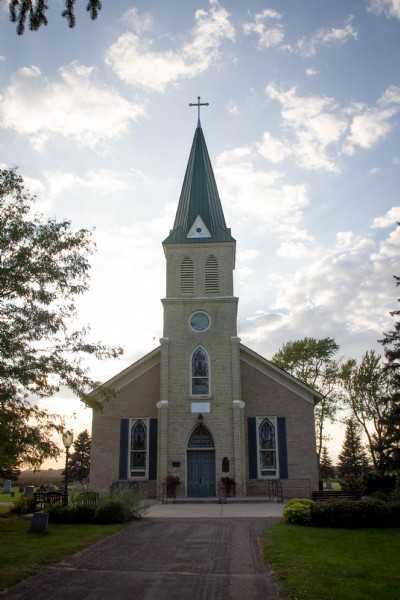History
 In 1854, the U.S. Government was promoting the settling of Minnesota and sale of land. In April of that year a party of Swedish land seekers arrived and purchased land in what was called Oscar's Settlement in honor of King Oscar of Sweden. But 1858 it was renamed Union Settlement. When churches were started at either end of the Settlement Union Settlement became known as East Union and West Union. At the time land sold for $1.25 an acre. This area of Carver County was part of the Minnesota Big Woods.
In 1854, the U.S. Government was promoting the settling of Minnesota and sale of land. In April of that year a party of Swedish land seekers arrived and purchased land in what was called Oscar's Settlement in honor of King Oscar of Sweden. But 1858 it was renamed Union Settlement. When churches were started at either end of the Settlement Union Settlement became known as East Union and West Union. At the time land sold for $1.25 an acre. This area of Carver County was part of the Minnesota Big Woods.
In the mid 1850's Eric Norelius, a Pastor, circuit rider, missionary, church administrator editor and founder of institutions had a vision for the future of Carver, Minnesota. Carver already had 40 houses, a steam sawmill, a small school house but no church. He knew that if Swedes were going to settle there they would need a church.
One can readily understand the need for a house of worship. Most of these immigrants had a deep faith in God and a strong tradition of worship.
In 1857 the people of Union Settlement had begun to build a log church. 30 x 36 x 14 feet. The people started to worship there even before it was finished. Pastor Carlson arrived in 1858 and the congregation was organized in June of that year. In 1862 East Union helped organize a College and they used the original log building. The school was first called St. Ansgar's Academy In 1864 the log building was sold to the Minnesota Conference and moved across the street where it stands to this day. In 1876 the school was moved to St. Peter and renamed Gustavus Adolphus College. The vacant building was used as the church parish hall and in 1983 it was recognized as the oldest church related building in Minnesota in continuous use since 1857.
In 1866 construction of our current building began. It was built with Carver brick and took almost two years to complete. The church cost $5,340. The church was dedicated in 1868.
A bell was hung in the steeple sometime between 1880 and 1882. The bell cracked years later and is now mounted outside the church building's main entry. We walk by it every Sunday morning.
In 1886 changes and additions included the rounding of the ceiling and the tops of the windows. The altar picture of the crucifixion of Jesus was painted and hung and a new pulpit was built. In 1887 the first pipe organ was installed.
By the 1890's the steeple was in disrepair. This steeple sat on the roof of the church. The decision was made to add a new steeple tower to the front of the building rather than repair the old one. This was completed in 1897. Chaska brick was used instead of Carver brick so that is why the church is a darker brick than the steeple bell tower.
Over the years members continued to give towards repairs and additions to the church. Lighting and heating were modernized and a restroom was installed.
In 1920 the windows were replaced with leaded stained glass. Between 1970 and 1980 the roof was re-shingled with cedar shakes and the stained glass windows were repaired and covered with protective glass.
In mid-century the interior of the sanctuary was restored using as a guide a 1908 photograph of the interior of the church. The goal was to capture the appearance of the early 1900's. The altar painting was reframed and the communion rail was repaired and refinished. The altar and pulpit were painted and stenciling was used to decorate as in earlier times.
The recessed lights were replaced with chandeliers resembling the early kerosene fixtures. The nave and narthex, (seating area and entryway) were wainscoted. Oak railings replaced the wrought iron railings on the stairs and balcony.
In 1994 the current Parish Center was built and paid for.
We switched all the buildings to gas in 2011 and insulated and re-roofed the Parish Center. The parsonage got 23 new windows.
Everything you see on our campus was built, renovated, renewed, restored and added by gifts from the congregation. Be it cash, labor or lumber. It has been 157 years of extraordinarily generous philanthropy. We have started a church and a college and we have built one of the most beautiful cemeteries in the county.
